P4 Indoor Outdoor rental LED screen with Die-Casting Cabinet
P4 LED display can be widely used in retail store, pubs and hotels, shopping center, TV and broadcasting center, worship, theater, auto show, award and corporate show, concert touring, rental and staging, festival and sports event, art exhibition, press conference etc.
1. Certification: CE, RoHS, UL, SGS
2. Warranty: 3 years
3. Support TV, S-Video, DVI, AVI, MOV.
4. High resolution, 62500dots/m2

| NO.: |
Product name |
P4 high definition rental led display |
| 1 |
Pixel Pitch(mm) |
4mm |
| 2 |
Pixel configuration |
1R1G1B/SMD2121 Black lamp |
| 3 |
Pixel density |
62500dots/m2 |
| 4 |
Brightness |
1600cd/m2 |
| 5 |
Module size(W*H) |
256*128mm |
| 6 |
Module Resolution (W*H) |
64 dots x 32dots |
| 7 |
Module weight |
600g |
| 8 |
Cabinet size (W*H) |
(512mm×512mm) |
| 9 |
Drive IC |
MBI5124 |
| 10 |
Drive mode |
1/16scan |
| 11 |
Viewing Angle(V/H) |
140 ºC |
| 12 |
Grey Scale |
65536 degree |
| 13 |
Life time |
>100,000 Hours (50%) |
| 14 |
MTBF |
>50,000 Hours |
| 15 |
Operating Voltage |
AC110V/220V±10% |
| 17 |
Screen Power Consumption |
Max: 900w/m2; Average:300w/m2 |
| 18 |
Input Power Frequency |
50/60Hz |
| 19 |
Operating temperature |
-30--60ºC |
| 20 |
Humidity |
10%-95% |
| 21 |
Refresh Rate |
≥1920HZ |
| 22 |
Control Method |
Synchronized with computer monitor |
| 23 |
Color Temperature |
6500K-9500K |
| 24 |
LED control system |
LINSN,Nova-star,Colorlight is selectable |
| 25 |
Control Distance |
100 m (no repeating); Optical fiber transmission: 500m- 15km |
| 26 |
Accepting signal with video processor |
PAL/NTSC/SECAM,S-Video;VGA;RGB;Composite Video;SDI |
| 27 |
Systems Operating Platform |
Windows Xp / Windows 7 / windows 8 /8.1 / windows 10 |



 WHAT IS LED?
WHAT IS LED?
LED is short for Light Emitting Diode. An LED emits light as a result of electric luminescence. It is also known as "cold light" as, unlike with old-fashioned incandescent bulbs, the light is not produced by heating a metal filament. The diode, on the other hand, emits light when flowing through two specially coated silicon semiconductors. It is one of the most energy-efficient and power-saving ways to produce light.
An LED consists of solid materials without movable parts and is often moulded into transparent plastic. This ensures high durability. When an LED is on, it emits almost zero heat. This reduces the problem of cooling the electronic parts.
The first LED was created by Russian inventor Oleg Losev in 1927. For many years, it was only possible to produce infrared, red and yellow LEDs. These diodes were found in everything from remote controls to clock radios.
It was not until 1994 that Japanese scientist Shuji Nakamura was able to demonstrate an efficient blue LED. White and green LEDs soon followed, laying the foundation for the LED revolution we have seen in lighting and display technology.

 Audited Supplier
Audited Supplier 









 Audited Supplier
Audited Supplier